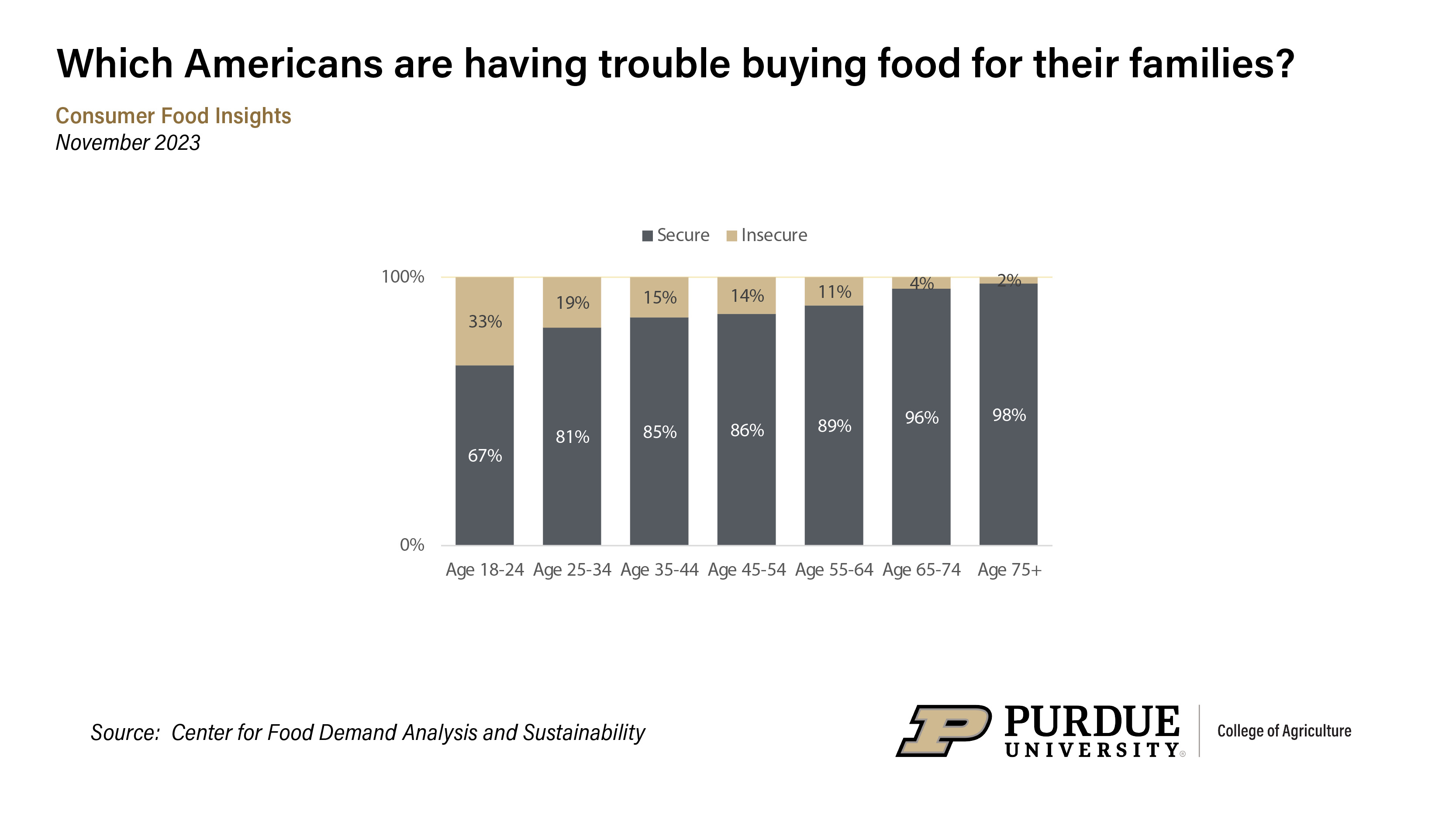The use of food-date labels such as “use-by” and “best if used by” causes consumer confusion that results in many Americans discarding food that is safe to eat or donate, according to the November 2023 Consumer Food Insights Report.
The survey-based report out of Purdue University’s Center for Food Demand Analysis and Sustainability assesses food spending, consumer satisfaction and values, support of agricultural and food policies and trust in information sources. Purdue experts conducted and evaluated the survey, which included 1,200 consumers across the U.S.
The Congressional Research Service recently reported that 7% of all U.S. food waste is because of date labeling confusion. “The goal of this month’s CFI survey was to gather consumer perceptions about what these food date labels mean,” said the report’s lead author, Joseph Balagtas, professor of agricultural economics at Purdue and director of CFDAS.
The USDA Food Safety and Inspection Service defines “use-by” and “best if used by” as references to peak food quality rather than the date after which the food is no longer safe to eat. However, there is no official standard for food date labeling in the U.S., which leads to an unsurprising mix of responses as to what they mean.
“Over half of consumers connect “best if used by” and “use-by” dates with food safety, while over 30% believe these labels are related to food quality,” Balagtas said. “This information problem is a kind of market failure and leads to waste.
“One potential fix to misinformation is for the government to set standards for food date labels to help inform consumers what is and is not safe to eat to help reduce food waste in the U.S. The recently proposed Food Date Labeling Act is an attempt to achieve that goal.”
The November survey also looked at consumer perceptions of foodborne illness risks. Food-risk attitudes are divided into three groups: risk-averse, risk-neutral and risk-loving. The groupings were based on respondents’ self-assessed risk tolerance for food at home (FAH) and food away from home (FAFH) on a scale from 0 (risk-averse) to 10 (fully prepared to take risks or risk-loving). The summaries broken down this way focus on CFI data from January to November 2023.
 Food Items Perceived as Having a High-risk of Containing Foodborne Bacteria (% of responses where selection occurred), Nov. 2023
Food Items Perceived as Having a High-risk of Containing Foodborne Bacteria (% of responses where selection occurred), Nov. 2023 “We found that consumers believe the risk of contracting a foodborne illness is higher when eating food at a restaurant compared to eating food they prepare at home themselves, which is consistent with data on the incidence of foodborne illness,” Balagtas said. “So it is not surprising that we also see that consumers who are more risk-averse when it comes to their food, eat home-cooked meals more frequently than consumers willing to take more risks with their food consumption.”
A variety of store-bought goods have the potential to contain foodborne bacteria that cause illness. Even so, consumers were more likely to select raw meat items as foods that pose a high risk of foodborne illnesses.
“We see a gap of more than 20 percentage points in the rate at which raw meats were selected compared to leafy greens, milk, flour and raw fruits and vegetables, despite the fact that some of these items that are perceived as ‘safer’ have caused foodborne illness outbreaks in the past,” Balagtas noted.
The Interagency Food Safety Analytics Collaboration, a group tasked with monitoring the causes of foodborne illnesses in the U.S., recently reported that the contribution of fresh produce to foodborne outbreaks is comparable to that of raw meats, and in some cases, greater.
The November survey also showed that food insecurity has dropped slightly for the fifth straight month, to 12.6%. “We do observe higher rates of food insecurity among risk-loving consumers, though this difference is likely the result of the correlation between age and food risk attitudes,” said Elijah Bryant, a survey research analyst at the center and co-author of the report.
 Food Insecurity Rate by Age, Jan. 2023 - Nov. 2023
Food Insecurity Rate by Age, Jan. 2023 - Nov. 2023 Generally, older consumers with more resources, on average, tend to be more food secure and less willing to take food risks, while younger people more willing to take risks tend to have fewer resources, resulting in higher rates of food insecurity.”
Consumers also were asked to recall their food behaviors over the last month. “Those who are classified as risk-loving reported eating fruits and vegetables without washing them, eating rare or undercooked meat and eating raw dough or batter more frequently than those who are risk-averse,” Bryant said.
Consumers less willing to take risks with their food were also less likely to agree with claims about the health benefits of non-conventional food items. These claims include organic being more nutritious than non-organic, plant-based milk is healthier than dairy milk and gluten-free food is healthier than products containing gluten.
This may be indicative of risk-averse consumers being more resistant to alternative foods in the food system that stray from what they perceive as the norm, Bryant said.
The Center for Food Demand Analysis and Sustainability is part of Purdue’s Next Moves in agriculture and food systems and uses innovative data analysis shared through user-friendly platforms to improve the food system. In addition to the Consumer Food Insights Report, the center offers a portfolio of online dashboards.





